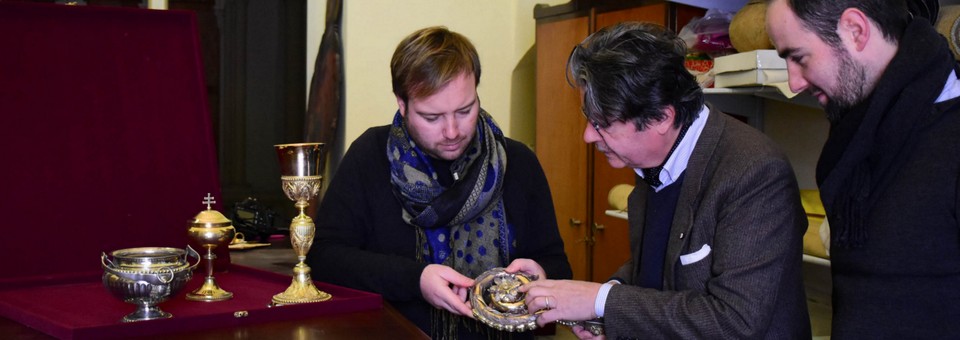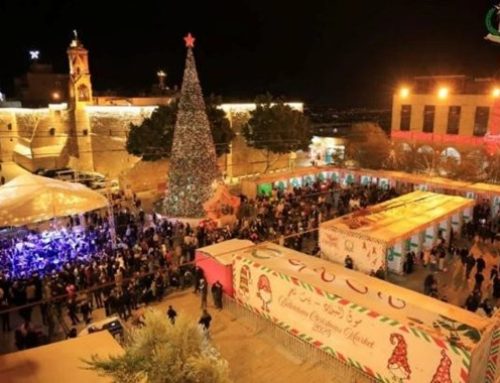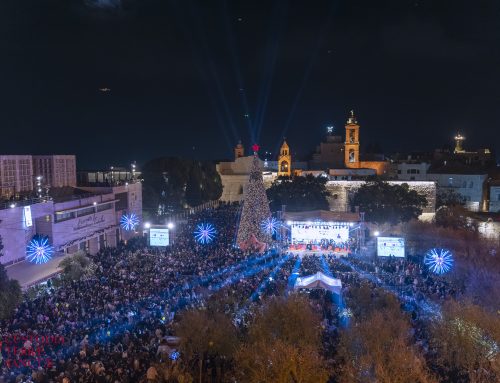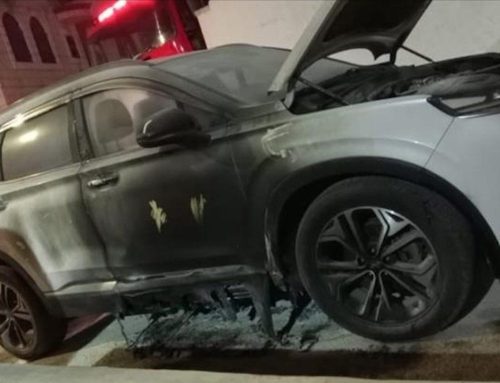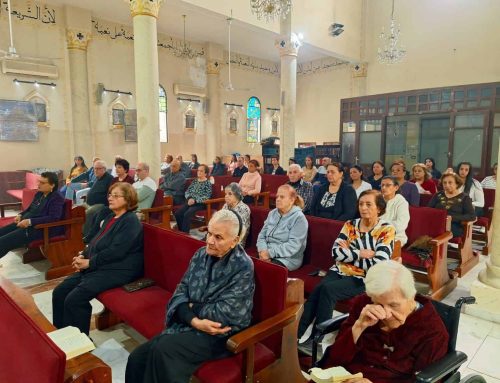JERUSALEM – For over a year the Latin Patriarchate of Jerusalem has decided to catalog its liturgical heritage. An important step in this project, led by Charles-Edouard Guilbert-Roed, former head of the project office at the Patriarchate, and passionate about his history, took place from February 18-24, 2019. Actually, two Lyon experts, Bernard Berthod and Gaël Favier joined him in Jerusalem to draw up an inventory of these pieces and study their origins. A work that makes one dream: and does the restoration allows a possible exhibition ?
Doctor of Letters and eminent consultant of the Pontifical Commission for the Cultural Heritage of the Church, Bernard Berthod is curator of religious Art for more than thirty years in Fourvière, a museum of sacred art of the nineteenth and twentieth century.
Coming from a large family of Lyon goldsmiths dedicated to liturgical art, Gaël Favier, a graduate of the École pratique des Hautes Études, specializes in goldsmithery and religious art. A piece marked by the punch of the Favier family has also been discovered during research.
This week the presence of these two experts had several objectives: first rediscover these objects, find their exact provenance and their manufacturer and estimate their market value.
Among the objects examined, a large portion belonged to the different Latin Patriarchs of Jerusalem: the majority of the pectoral crosses mostly containing relics of the True Cross, including a pectoral cross belonged to Mgr. Giuseppe Valerga, the first Latin Patriarch of Jerusalem. Episcopal croziers and rings, chalices or medals and distinctions from different countries recalled the presence and political importance of the Patriarchate. Among the prestigious pieces studied, the Great Cross that belonged to Mgr. Michel Sabbah, (first Palestinian Patriarch) or the stole of the then Grand Prior of the Order of the Holy Sepulcher, Bishop Alberto Gori.
Most of these items are gifts from the Knights of the Holy Sepulcher, large families or from bishops. The Sovereign Pontiffs were also donors, Paul VI offered a medal during his visit in 1964, and Benedict XVI twice donated a Pectoral Cross.
The possibility of restoring some gold jewelry not with the aim of use them later. Living with one’s time remains essential within the Church, for example, it is no longer commonplace to see a bishop wearing on his finger a pontifical ring of a that period, especially in view of the size of the object and the absence, in most cases, of episcopal gloves.
In the Orient, the idea of heritage conservation is not especially a priority, because of permanent conflicts, local history is in permanent reconstruction, the latter is little known by a large part of the priests of the Holy Land.
Among the pieces studied, Bernard Berthod paid particular attention to two objects in the collection: a box of silver and enamels and an Episcopal chapel that belonged to Pius IX.
The first is a casket of silver and enamels made by the Lyon-based Armand-Calliat, specialized in religious goldsmithery and whose work is distinguished by its spiritual significance.
Dating from 1883, this casket was donated by the Associates of the Catholic Alliance to His Beatitude, Patriarch Vicente Bracco. It was exhibited in Paris in 1889, at the Universal Exhibition. The Catholic Alliance was founded in 1882 by the priests Augustin and Joseph Lehmann for the “defense of the rights of Our Lord Jesus Christ” in order to oppose the anti-clericalism of the French government.
It initially contained a book in which the names of donors of the Latin Patriarchate of Jerusalem were written. It was offered at the Eucharistic Congress in Jerusalem presided over by Cardinal Langenieux Archbishop of Reims and Legate of the Pope, who, following this event, became aware of the suffering of the Christians of the Holy Land.
The casket parallels the new Catholic growth against the anti-clerical republican government and the historical crusade initiated by Urban II. We can see the banner of the Catholic Alliancepiercing “the infamous beast”, located in the center, and Pope Urban II surrounded by Blessed Peter the Hermit and Saint Louis holding in his hand the Holy Crown of Thorns that was housed in the Holy Chapel of Paris, built when the Holy Relic was acquired. Two currencies are also readable facing each other: “God wills it” (“Deus lo vult”), the rallying cry of the first crusaders and motto of the Equestrian Order of the Holy Sepulcher of Jerusalem as well as “We want God”, denouncing the oppression undergone by Catholics in France at that time.
Various enamels and inscriptions praising Christian virtues adorn this beautiful setting. Three great French pilgrimage sites are also represented by three flowers, a daisy for Paray-le-Monial, a lily for Reims and a rose for Fourvière. Finally we can read all around this box, the prayer, “Ave Maria.”
The second object is a magnificent episcopal chapel lined, inside its box, with damask velvet and which was offered by Pope Pius IX to Msgr. Valerga. For the record, in 1847, Giuseppe Valerga was sent by Pius IX at the age of 34 to restore the Latin Patriarchate of Jerusalem, and he became the first Patriarch and Grand Master of the Equestrian Order of the Holy Sepulcher of Jerusalem.
This episcopal chapel contains all the objects that the bishop needs to perform his liturgical functions: the objects used by all priests to celebrate a mass like a chalice, burettes, a ciborium, a bell … There are also objects specific to the role of bishop: the crozier, an ablution ewer, a pair of tonsure scissors, oil stocks for anointing at baptisms, ordinations and confirmations.
On each object of this episcopal chapel are inscribed the arms of the family of Pius IX, Mastai-Ferretti.
Due to the richness and quantity of objects grouped together, new studies by typology have to be organized in the presence of researchers specialized in different fields such as gemology or phaleristics.
By: Irénée Julien-Laferrière
Source: Latin Patriarchate of Jerusalem

